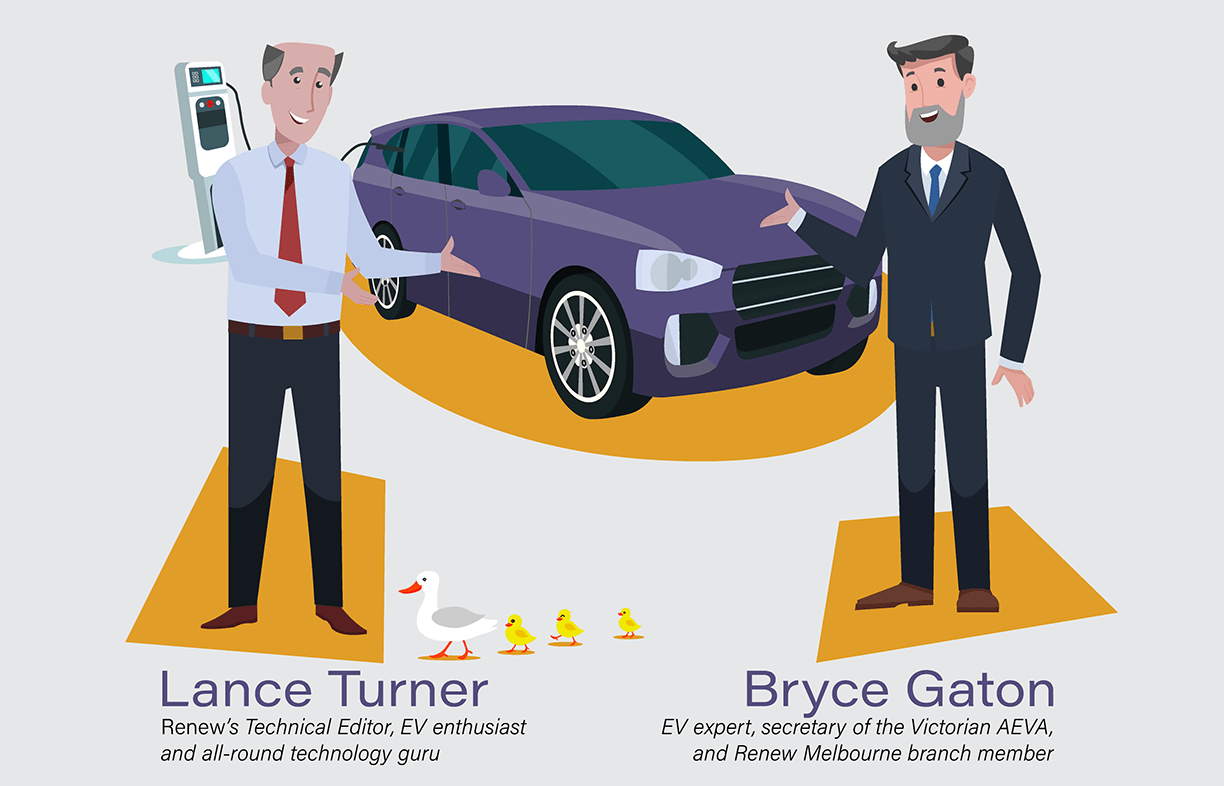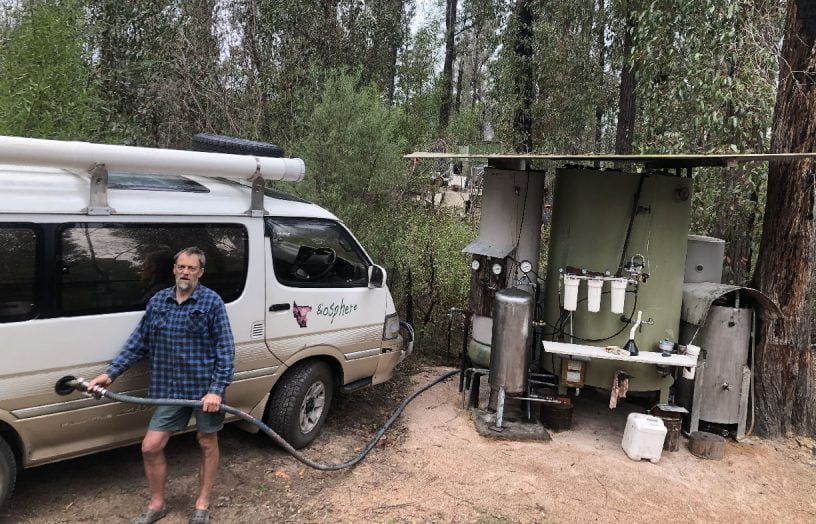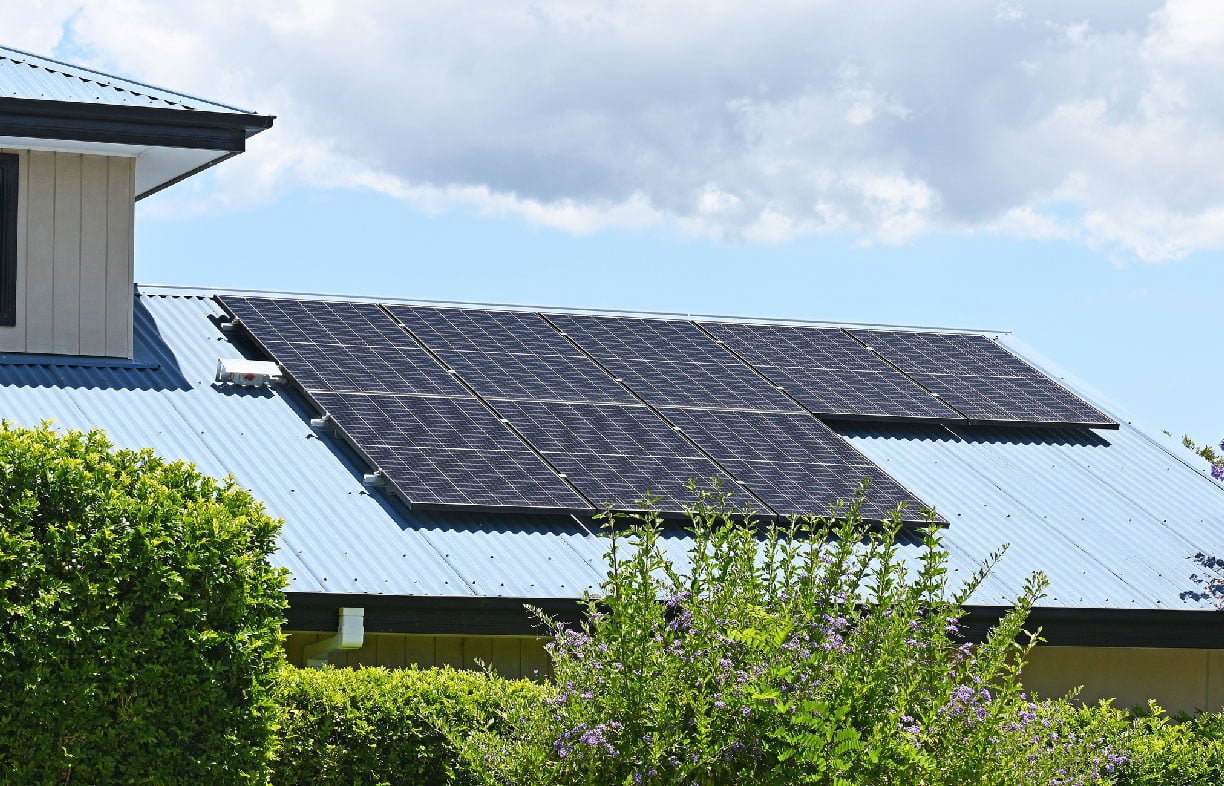Electric vehicles for newbies

Everything you ever wanted to know about electric vehicles … and whether you were afraid to ask or not, the answers are all here in this Renew special feature. To start with, Lance Turner provides a rundown on EVs: their advantages, how they work, why they’re superior to internal combustion engine-driven cars—and, yes, whether you can tow with them.
As climate change heats up (literally), it’s well understood that we all need to move away from burning fossil fuels for electricity generation, heating and transport. In this guide, we focus on the latter: we will look at vehicles powered by non-fossil fuels, along with what alternative vehicles exist, where to get them and how much they will cost you.
Fossil-fuel-powered vehicles account for around 18% of Australia’s total greenhouse gas emissions. Electric vehicles (EVs) reduce these emissions considerably and, as the electricity grid moves increasingly towards renewable sources, they have the potential to eliminate vehicle emissions entirely.
We’ve talked a lot about EVs in past issues, but for the uninitiated, the world of EVs can be daunting. EVs are fundamentally different to internal combustion engine (ICE) vehicles, both in how they work and how they are operated. These differences can be confusing to people who’ve spent their entire lives driving ICE cars—but EVs are the way of the future, and if you find them a little intimidating, we’re here to help.
EV advantages
The primary advantage of an EV is lower greenhouse-gas emissions. In almost all cases, EVs produce lower greenhouse-gas emissions than their ICE counterparts, even when the electricity that powers them is produced from coal.
But it’s not just about emissions. EVs have lower “fuelling” costs (around a quarter to a half of an equivalent ICE vehicle) and require lower maintenance due to their engines having significantly fewer moving parts—which means lower ongoing costs. They are also quiet, have excellent acceleration, and provide the added convenience of being able to be charged at home for most trips.
So why don’t we all have EVs already?
The low demand for EVs in Australia has been due, in part, to a lack of knowledge around EVs among the general public, ignorance fostered by right-wing media and a shockingly ignorant and untruthful federal government. (It was only two years ago that Scott Morrison accused the Labor party of “wanting to end the weekend” with a policy that called for 50% of new car sales to be EVs by 2030.)
Other factors include the relatively small selection of vehicles and the fact that EVs have been (and remain) more expensive to purchase than ICE equivalents. The relatively high purchase price is also due to a lack of statutory incentives to adoption—the aforementioned federal government provides precisely no incentives to purchase an EV, leaving states to provide their own incentives (or, in the case of Victoria, disincentives).
These factors have conspired to leave Australia way behind the rest of the world in EV adoption. However, this situation is slowly changing as more people gain experience with EVs, whether that be through EV advertising, or riding in a friend’s or family member’s new EV.
Demand is growing, and as a result, so is the selection of EVs available to Australians. There are vehicles from small city cars through to large SUVs, with a greater number of diverse new models on the way for this year and next.
One of the other perceived issues—lack of range—has become less of an issue as more people become educated on EV capabilities, and as state government funding of charging infrastructure ramps up. In reality, EVs are the best-performing, lowest-maintenance and most-reliable vehicles available, with some offering ranges exceeding 500 km.
And while the upfront cost of most EVs is still higher than ICE equivalents, it’s clear to those who look past the sticker price that the total cost of ownership (TCO) is close to parity with ICE vehicles, due to much lower running and maintenance costs. Happily, purchase price parity is also expected somewhere between 2022 and 2025—not that far away!
Read this article and the associated EV buyers guide in their entireties in Renew 157
Further reading
 Transport & travel
Transport & travel
Biofuel vs battery
John Hermans gives his opinion on the best power source for electric vehicles.
Read more All-electric
All-electric
Direct PV solar hot water buyers guide
Solar hot water can dramatically reduce your water heating costs, but what if your house isn’t suitable for a conventional solar water heater? There is an alternative that can be used almost anywhere you have solar access, as Lance Turner explains.
Read more All-electric
All-electric
Staying warm this winter: A buyers guide to heating
As autumn declines into another long winter, it seems an opportune time to revisit one of our most popular buyers guides: our essential guide to heating yourself and your home.
Read more
